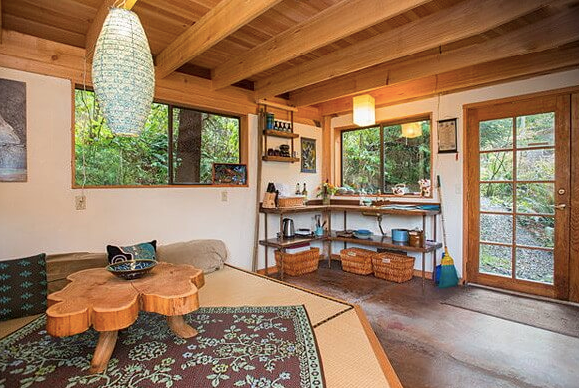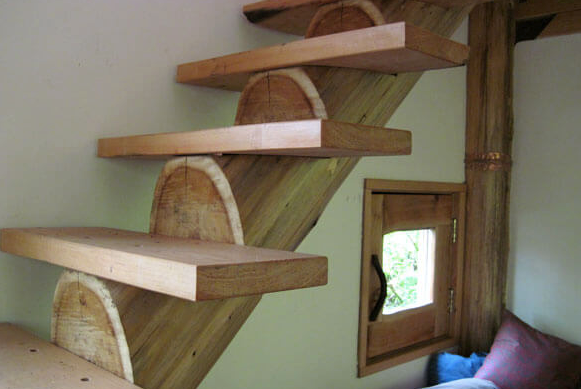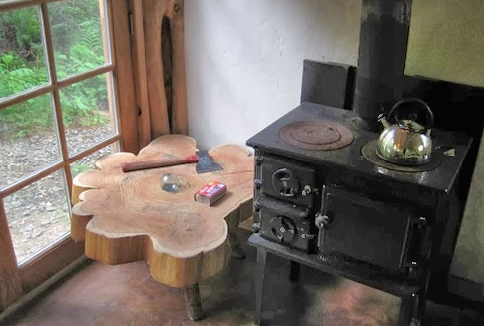Brian Schulz Tiny House Built For $11K
Tiny houses. They might be small, but with the recent flood of sustainable living homes that we’ve seen recently – houses perched in trees, towable homes and shipping containers upcycled into tiny summer homes, they’re fast becoming a popular choice for people across the world. Budget friendly, sustainable and stylish – what’s not to love? One of our favourites is the Japanese forest house, built by Brian Schultz. Almost every part of the house, from the logs that form the stair treads to the paper in the Japanese lanterns was made or found within ten miles of where the house sits.
Brian’s tiny house started with a brass sink, of all things. Pottering around his local recycling centre, he came upon a gorgeously golden brass sink, realizing as he made his way towards the register that if he bought the sink, he’d have to build a house to suit. So, that’s what he did – built a tiny home, using mostly upcycled, salvaged materials with a little help from local artists. And the end result is pretty spectacular, filled with seemingly tiny details that we love – open wooden joists, wonky windows and rough plaster walls. The architectural details of the home are not hidden and are on show for all to see, giving the home a gloriously authentic feel.

His aim was for the house to be “Japanese”, and although he says that he’s “fallen short” of some of the details, we think he’s done a brilliant job. The design echoes Japanese tea houses, which were based on the design of peasant homes, with plenty of rough texture, minimal decoration, plenty of wood and raw edges to create a calming, soothing atmosphere that only adds to the surrounding forest, rather than taking away from it. With a steep pitched roof, you’ll only glimpse the house from between the trees and if you do see it, the shingles and rough timber edging come straight from the forest around it – and so do the materials for the outside toilet.

The house was built for just under $11K in total and most of that went on goods that couldn’t be salvaged, like concrete, insulation, shakes and ties to secure the roof. The rest of the materials were upcycled and salvaged, re-used or simply taken from the woods outside of the house. The sink, which the house was built around, takes pride of place in the surprisingly sizable kitchen space. The windows were found at the local dump and cost a very reasonable $40, while the French doors were found on Craigslist and refinished. Flooring, both upstairs and downstairs, was reject flooring and the counter-tops were walnut, milled from a tree that was cut down in Portland eight years ago.

Some of our favourite pieces in the property are actually the most simple: the little wooden tables. The tops were sliced from a cedar tree stump, while the wonderfully wonky legs were taken from a smaller piece of cedar that Brian found on the beach and all three tables were made within just two hours – astonishing, really, considering how beautiful they are. We also love the staircase. The treads were made from a fir tree that was milled from a log found on the bay, the staircase from a tree straight from one of Brian’s friends’ forests, and the stair rail from alder tree that was cut right next to the house.

Brian’s ethos is the same as ours: when you search for something and when you make it your own, it becomes infinitely more meaningful. It helps you create connections with new people, helps you to discover new places, new skills and new things and binds you to the landscape surrounding your home. A humble log can be transformed into anything from a staircase to a candlestick, and once you learn about the potentially limitless number of ways you can upcycle the materials around you, you’ll open your eyes to a new world of possibilities.

